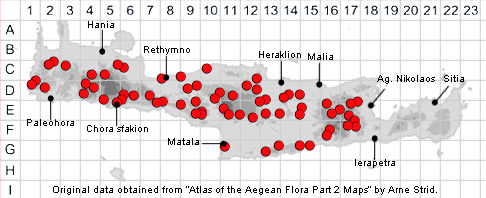SPECIES DESCRIPTION
ASPERULA PUBESCENS
Family and Genus:- See- RUBIACEAE/Sect. HEXAPHYLLA
Common Names:- None
Homotypic Synonyms:- Asperula incana, Crucianella pubescens
Meaning:- Asperula (L) Little-rough-one.
Pubescent (L) Covered in soft hairs, maturing.
General description:- Laxly caespitose perennial somewhat woody at the base,
Stems:-
1) (7-)10-40(-45) cm, more or less woody at the base, ascending, rigid, robust,
somewhat branched, and hairy;
a) internodes, usually more than 12, the upper distinctly longer.
Leaves:-
1) (3-)8-15(-20) x (0·5-)0·8-1·2 mm, in whorls of 6, linear, more or less acute,
densely hairy, sometimes glabrescent, margin distinctly revolute.
a) Upper internodes, twice as long as the leaves.
Flowers:-
1) Inflorescences, in 1-3 subcapitate cymes.
2) Corolla, hypocrateriform to infundibuliform, usually pubescent, pink or
sometimes almost white.
a) tube, (4·5-)5-6·5(-8) mm.
b) lobes, 2-3 mm, ovate, acuminate and more or less patent.
3) Anthers, purplish-black.
Fruit:-
1) 1,5 mm, subglabrous, ovoid.
Key features:-
1) Ovary and fruit, ovoid.
2) Flowers, usually in a capitula, pinkish.
3) Corolla, hypocrateriform to infundibuliform.
4) Stem, stout, branched, more or less woody at the base.
5) Internodes, mostly more than 12, the upper distinctly longer.
6) Flowers, and fruit subglabrous.
7) Corolla-tube, 4·5-8 mm.
Habitat:- Crevices and ledges of limestone cliffs, rocky slopes with dry open
shrubby vegetation and open woodland of Cupressus and Pinus halepenis. (0-)200-
1200(-1800) m.
Distribution:- Widespread common Cretan endemic.
Flowering time:- Mid-Apr to early July.
Photos by:- Steve Lenton

